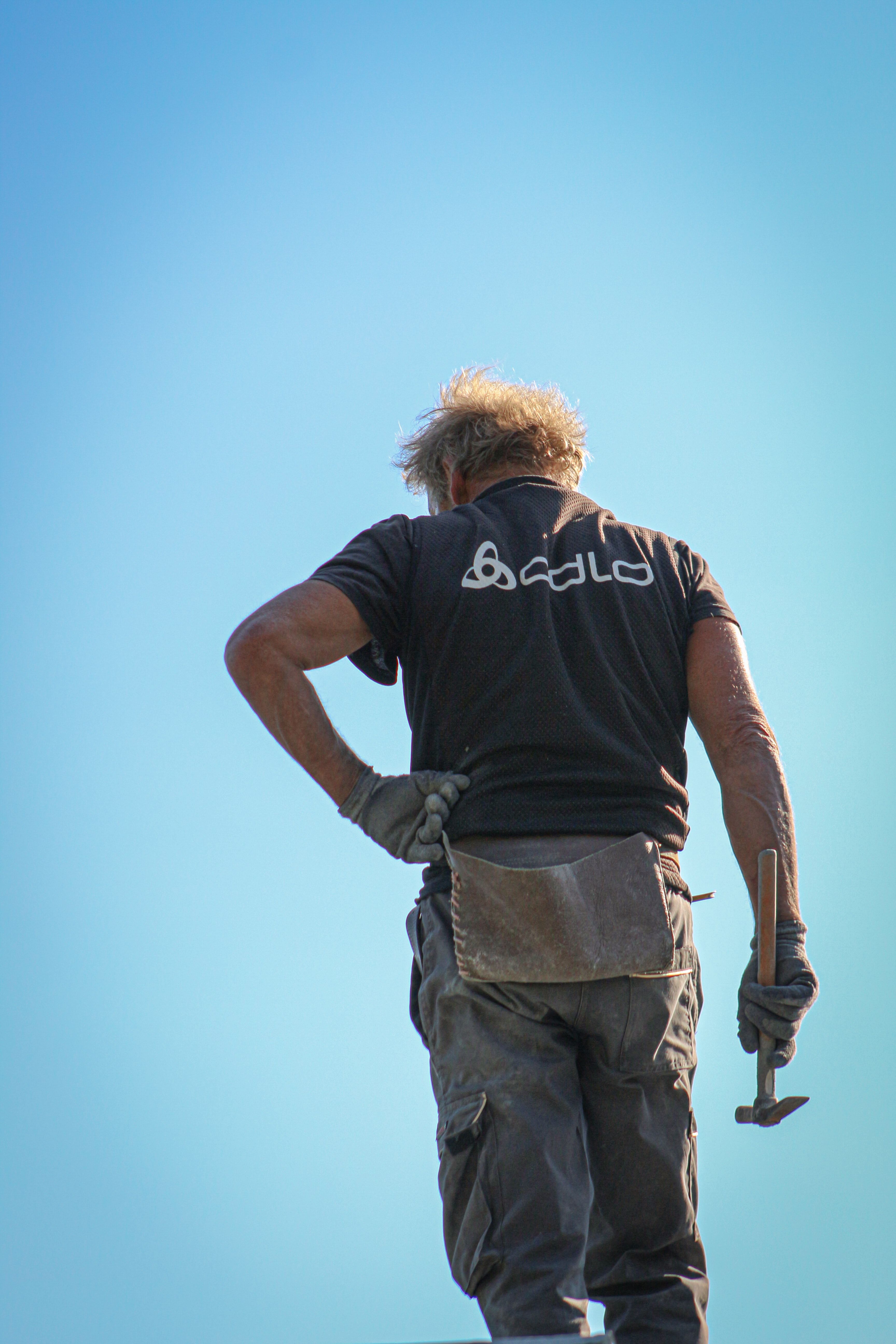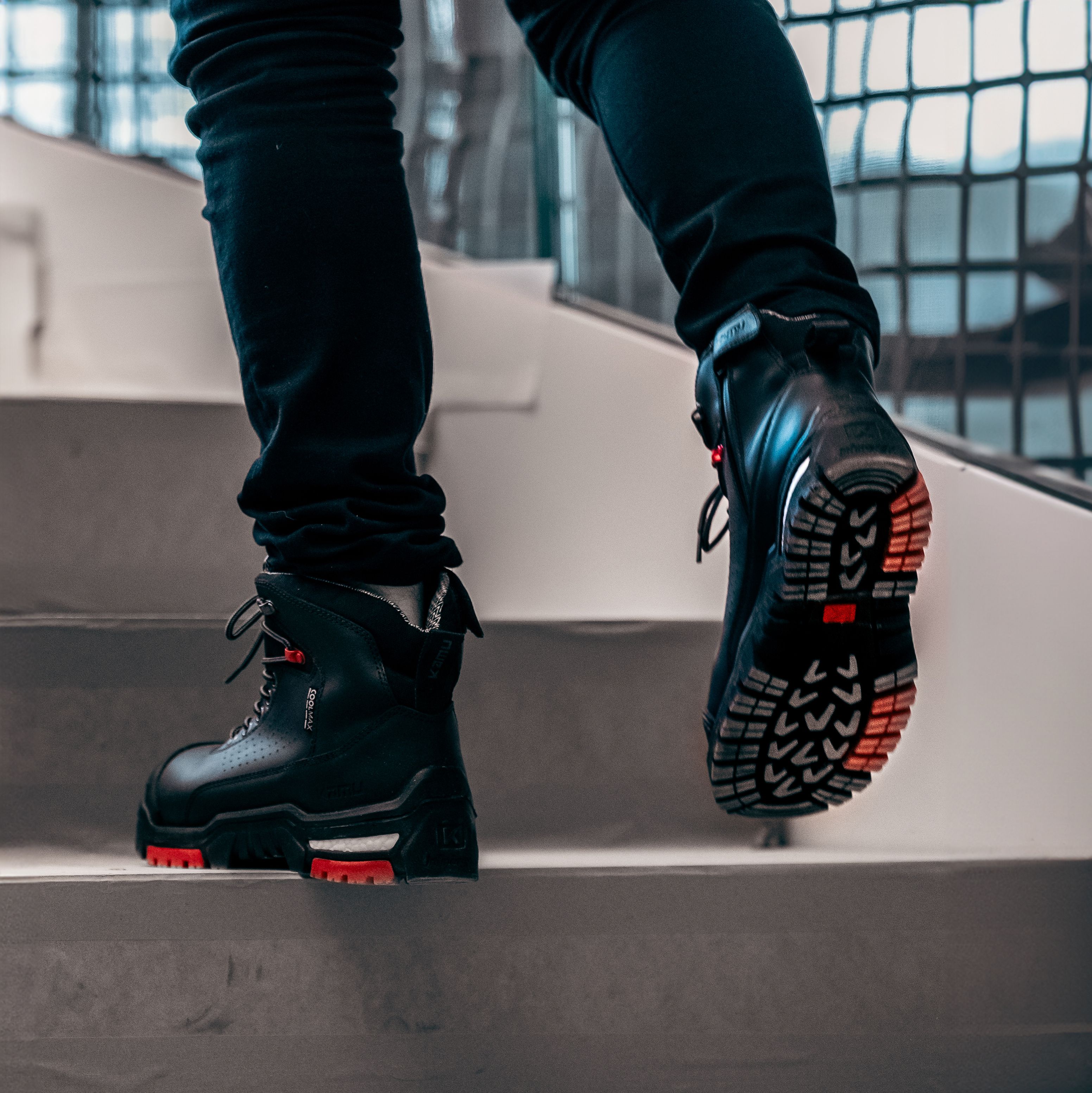Step forward to Fight Fatigue with Innovative Work Boots
)
Fatigue in the workplace operates like an invisible enemy, undermining our productivity, safety, and overall well-being. It's a pervasive issue that affects all industries – from construction to logistics, from manufacturing to resources.
Recent statistics paint a clear picture that tackling fatigue is a strategic necessity. As of the latest Update by Safe Work Australia, fatigue is a factor in about 23% of workplace accidents. That’s a considerable chunk of incidents that could be prevented with measures that are often surprisingly simple. The financial toll is also steep, with fatigue-related issues contributing to an annual productivity loss of approximately $7 billion.
In the mining sector over 40% of workers report feeling fatigued at least once a week. But this problem isn't limited to heavy industries; it spans across all sectors, from warehouses and production lines to office environments. The effects of fatigue even extend beyond incidents at work. Studies show that 20% to 30% of car accidents in Australia are linked to driver fatigue, often caused by long work hours and physical and mental exhaustion from work. The ripple effects of this issue highlight its significant impact on both safety and productivity.
The Ripple Effect of Fatigue Management
Proper fatigue management leads to fewer injuries and accidents at work but also contributes to better health, job satisfaction, and work-life balance. Workers who aren’t affected by fatigue tend to be more engaged, productive and content with their jobs and less prone to mental health problems. This benefits both employees and employers, fostering a more efficient and healthier work environment.
Recent advancements in fatigue management have been impressive. Educational programs have brought fatigue into the spotlight and raised awareness. Technological innovations have improved our ability to manage it. Cutting-edge detection systems, automated shift scheduling platforms, and fatigue-monitoring apps are now essential tools in modern fatigue management strategies. These technologies not only help ensure adequate rest but also optimise work schedules to align with workers’ natural rhythms and individual fatigue thresholds.

The Role of Workwear and PPE: More Than Skin-Deep
When it comes to combating fatigue, personal protective equipment (PPE) – and in particularly work boots and workwear – plays a crucial role yet is often overlooked. High-quality safety gear isn’t just about compliance and injury protection; it’s about equipping workers in the best possible way to support well-being and boost overall performance.
The Foundation of Fatigue Management: Footwear
Footwear is at the heart of the battle against fatigue, because our feet are possibly our most important work tools. They endure long hours, traverse miles and miles on uneven surfaces, and help carry heavy loads. So, investing in the right work boot is essential.
Advanced Anti-Fatigue Footwear Technologies
Here’s how the latest technologies in work boots can help reduce fatigue:
- Anti-Fatigue Midsoles: The most advanced safety footwear features full-length energy-return midsoles designed to minimise energy loss and reduce strain. These midsoles, inspired by athletic footwear, absorb impact and rebound to their original shape, which helps generate energy and propel the wearer forward. For example, KAMU boots – Australia’s award-winning safety footwear – have an additional full-length midsole made of BASF’s Infinergy® material. This cutting-edge performance material absorbs shock, cushions each step, and maintains its elasticity and resilience even under continuous loads.
Alex Hofmann, Business Manager for Australia and New Zealand at BASF Australia Ltd, explains: “Infinergy® stands out for its exceptional energy return of more than 57 percent, which helps reduce fatigue and enhance overall comfort. It retains its elastic performance over time, ensuring consistent energy rebound and support throughout long shifts. Compared to traditional materials like rubber and EVA, Infinergy® offers superior shock absorption and energy return paired with light weight, making it an excellent choice for demanding work environments.”
- Breathable Materials: Heat stress is a significant contributor to fatigue. Fatigue-reducing safety shoes with high-performance linings like COOLMAX® offer enhanced breathability and moisture-wicking properties. These premium liners help keep feet dry and cool by effectively transporting moisture away from the skin. Ultra-breathable linings also improve ventilation and are quick drying, reducing bacterial growth and extending the lifespan of the boots.
- Supportive Insoles: Quality footbeds are constructed to add long-term cushioning, support and comfort. OrthoLite® insoles, for example, offer moisture-wicking properties and durable cushioning, ensuring that workers remain comfortable through long shifts. Such insoles are also highly breathable enhancing the climate comfort for the wearer. Performance insoles are designed to retain their cushioning properties over time and after washing, making them a reliable solution for fatigue reduction.

The Importance of Proper Fit and Functionality
Proper fit is crucial for effective fatigue management. Ill-fitting boots can exacerbate fatigue by adding discomfort that drains energy and makes it hard to focus on the task. When choosing work boots, it's important to try on different models and brands to find the best fit. Boots that pinch or rub indicate poor quality, poor fit or incorrect sizing. Such work boots will not magically fit perfectly after a few weeks of “wearing them in”! They will continue to cause discomfort, adding to mental and physical fatigue.
Tailored for Her: Why Gender-Specific Boots Matter
To ensure a proper fit, it's crucial to choose gender-specific boot models. Women’s feet have different anatomical features compared to men’s, such as narrower heels, a higher arch structure, lower ankles, and so on. Unfortunately, many women end up wearing boots that are essentially just scaled-down versions of men’s models, which can lead to poor fit and increased discomfort. Boots designed specifically for women take these anatomical differences into account and are produced on female-specific lasts and moulds. KAMU calls this the 360-degree true comfort fit that offers better arch and ankle support and prevents slippage in the heel. Investing in boots tailored to a women’s foot anatomy not only enhances comfort but also helps reduce fatigue and prevent injuries by ensuring a safer step and proper support.
Slip Resistance and Stability
Slip-resistant footwear is essential for preventing accidents on various surfaces. Not all slip-resistant boots perform equally well on different types of surfaces, so it's important to choose safety shoes that are specifically designed for the workplace environment. Superior slip-resistance reduces the risk of slips and falls. What is more, it also helps maintain a natural, more effortless stride which contributes to overall fatigue reduction.
The Bigger Picture: Workwear and Wearable Technologies
Workwear extends beyond boots to include helmets, masks, and clothing, each contributing to fatigue management.
- Helmets and Headwear: Modern helmets are lighter and more comfortable, reducing neck strain. Some come with cooling systems or ventilation to prevent overheating.
- Protective Clothing: Advances in fabrics offer better breathability and moisture management, helping maintain a comfortable body temperature. Just as with safety boots, the right gender-specific fit of work garments helps reduce distractions, discomfort and fatigue, too.
- Wearable Technologies: Smart helmets and vests with sensors monitor physiological conditions and environmental factors, providing real-time feedback and alerts to manage fatigue effectively.
Takeaway: Fighting Fatigue Means Striding Toward Well-Being
Addressing fatigue is the current buzzword in Australian workplaces – for a good reason! It is more than just a trend; it’s about to become a vital aspect of safety and productivity and more and more companies see the value in taking a wholistic approach. By investing in the most advanced safety footwear and work apparel, fatigue management becomes a proactive strategy that integrates seamlessly into broader safety initiatives.
A comprehensive well-being strategy, which includes top-tier safety shoes, protective clothing and PPE, is essential for effective fatigue management.
Fatigue prevention goes beyond adjusting work schedules to ensure healthy sleep patterns and installing warning systems to avert the worst. It requires a comprehensive approach that includes investing in advanced protective gear, including anti-fatigue safety footwear as part of fostering a culture of ergonomic workplace equipment. By tackling fatigue from multiple angles, we not only help workers to stay alert, healthy and productive we also enable them to have something left in the tank to enjoy work after the shift.
Let’s keep supporting health, well-being and smooth operations by equipping our our workforce with anti-fatigue work boots that help prevent exhaustion with every step we take.
For information on KAMU anti-fatigue footwear and to apply for your wear trial, contact contact@kamusafety.com.au or call 18000BOOTS

